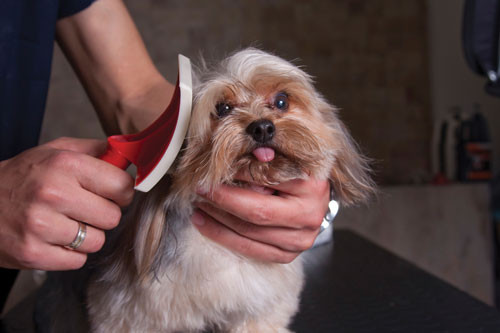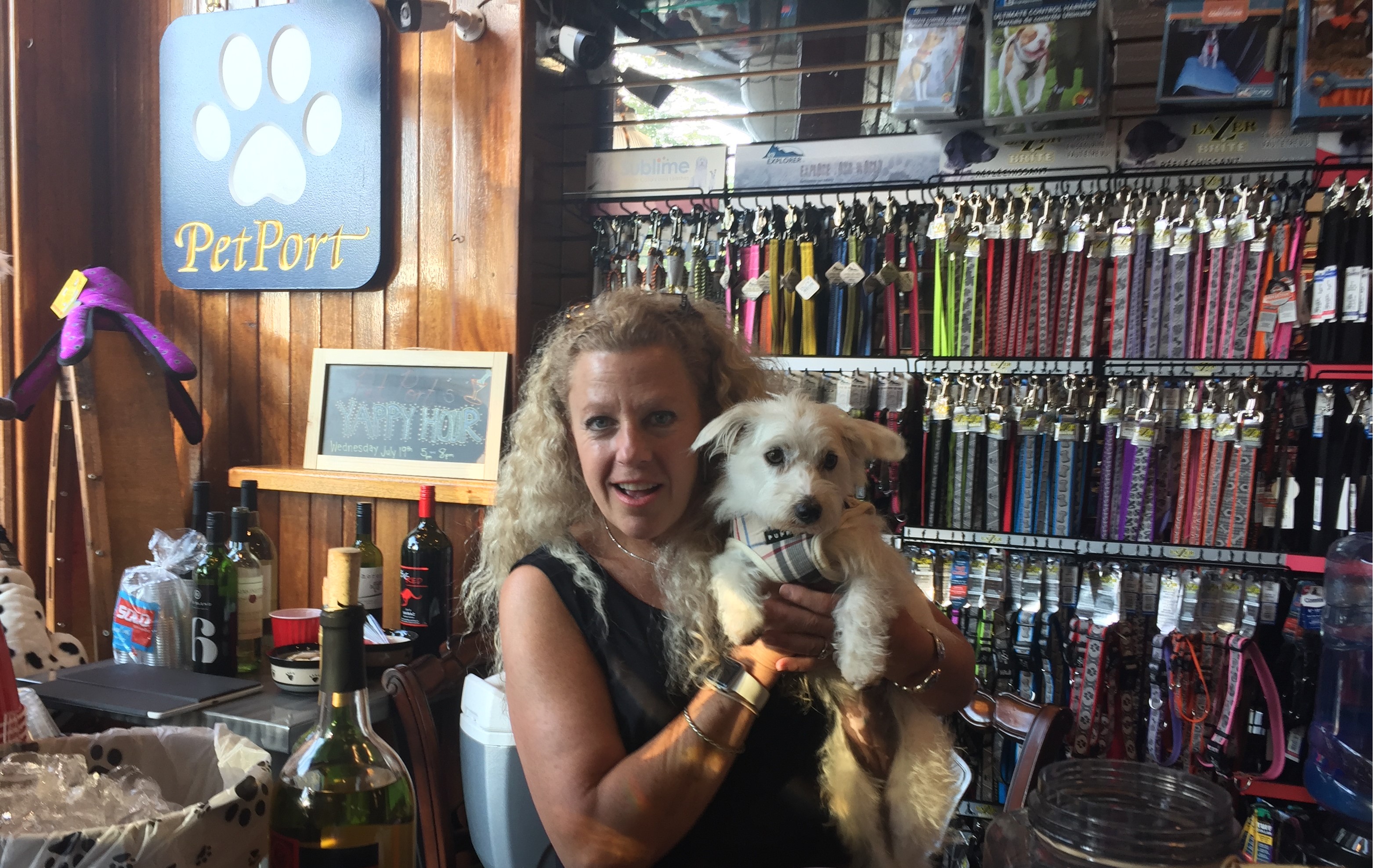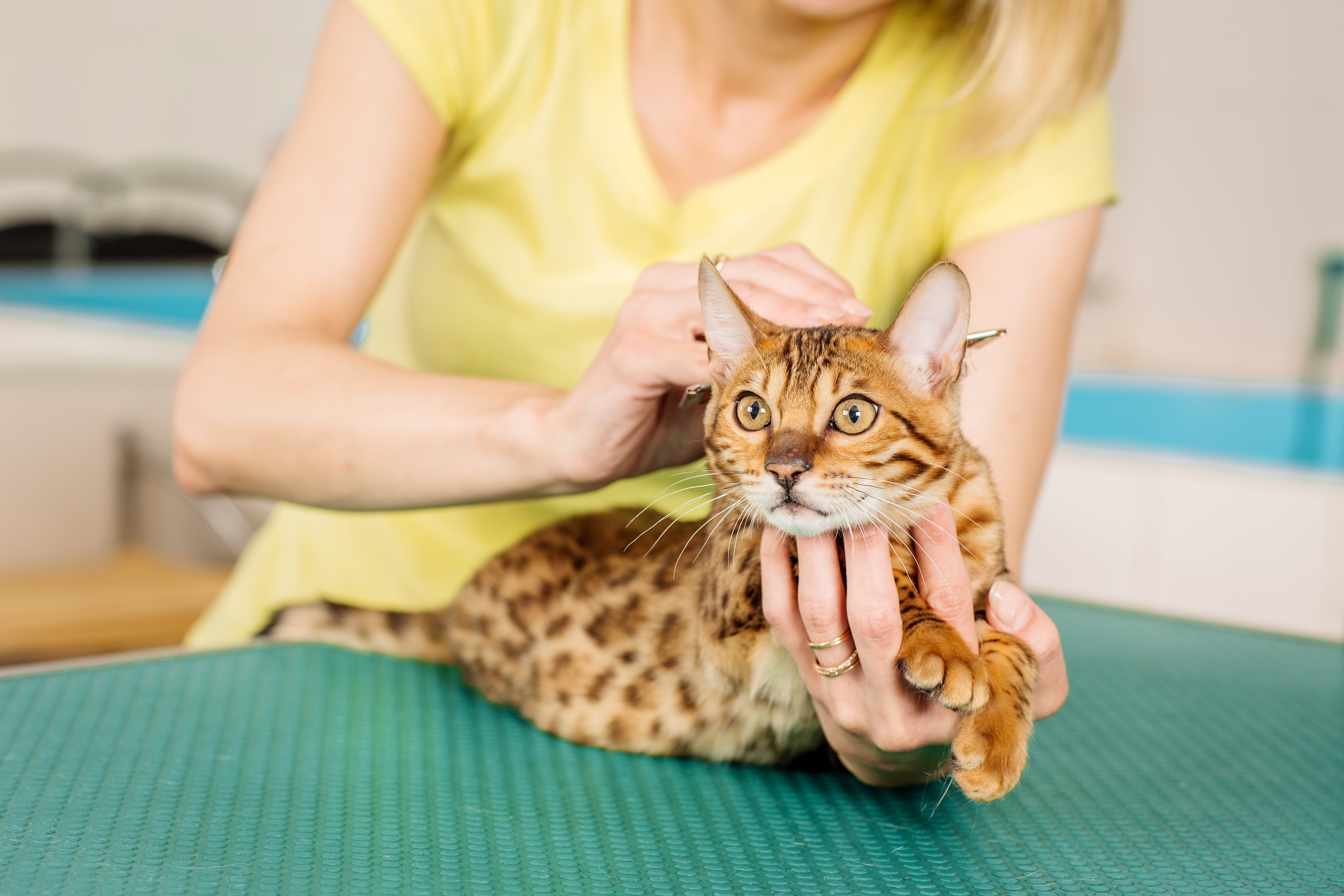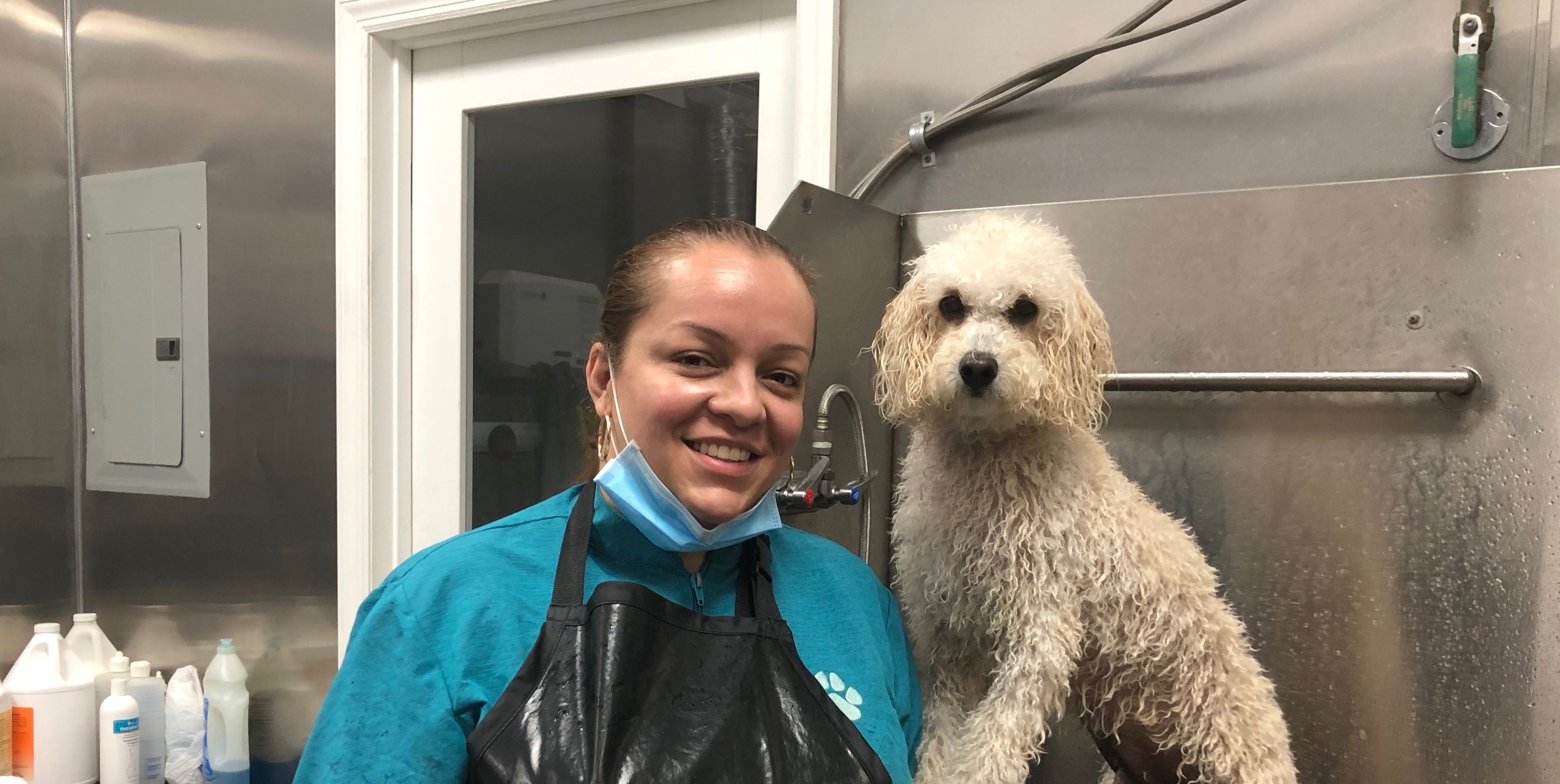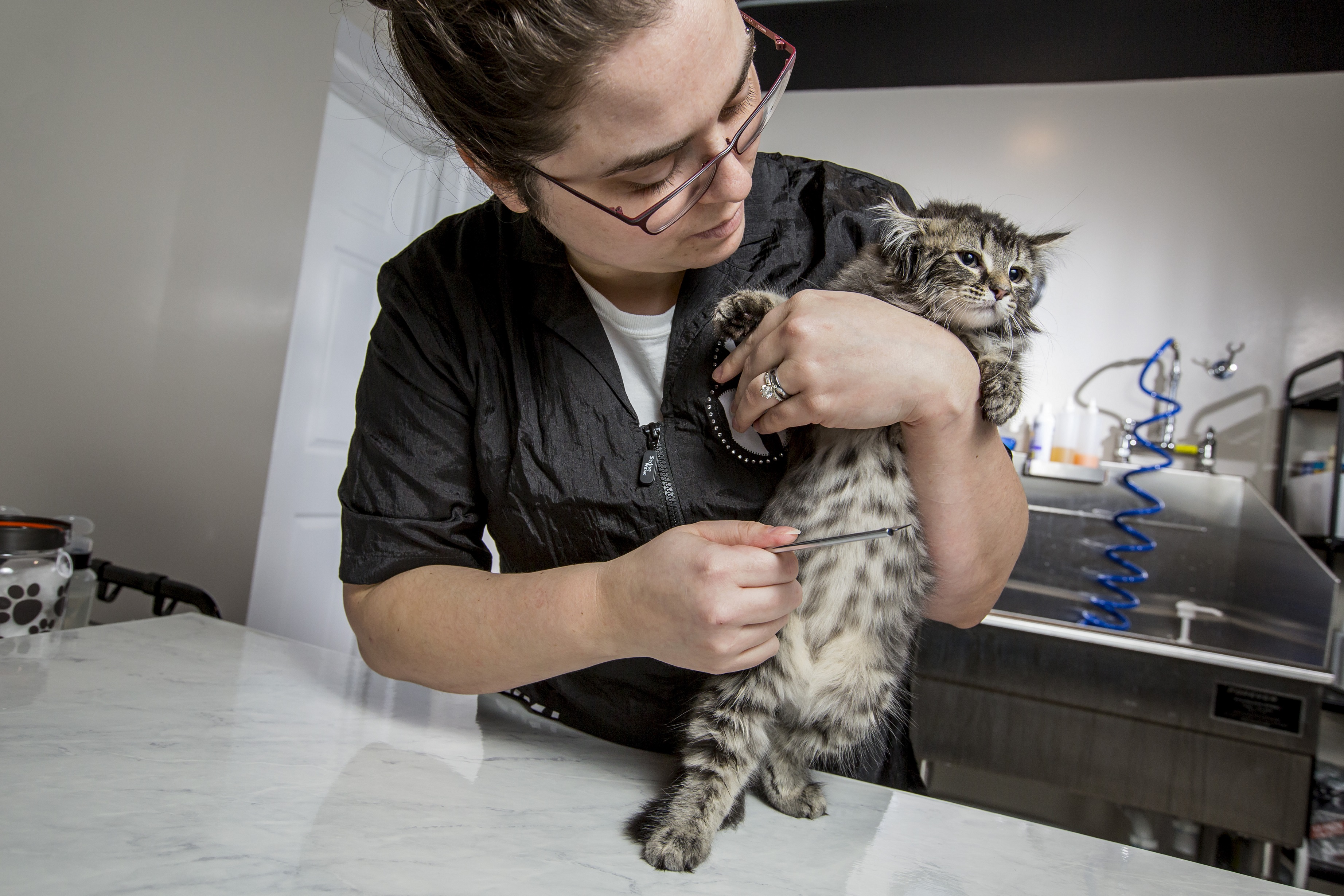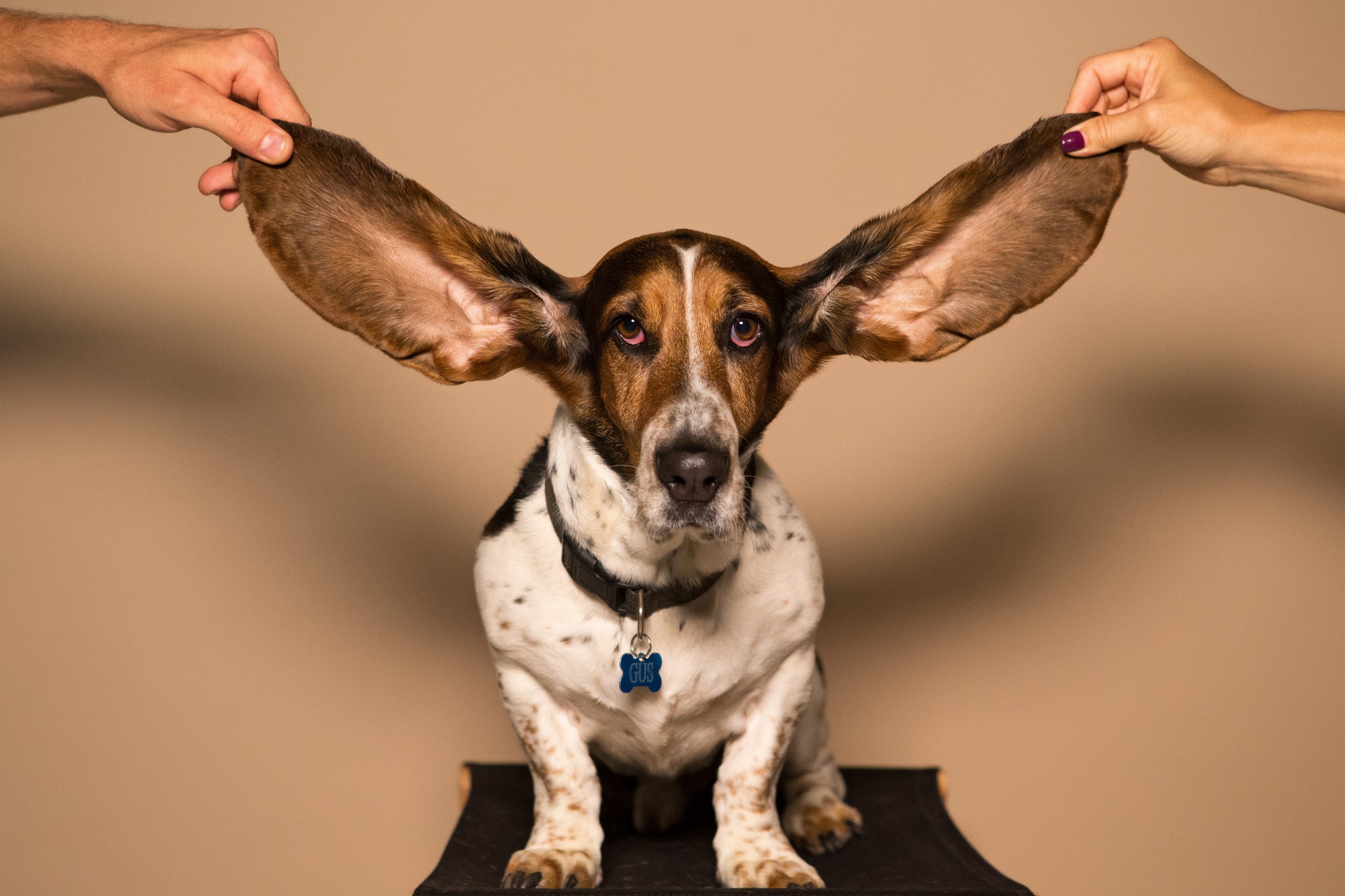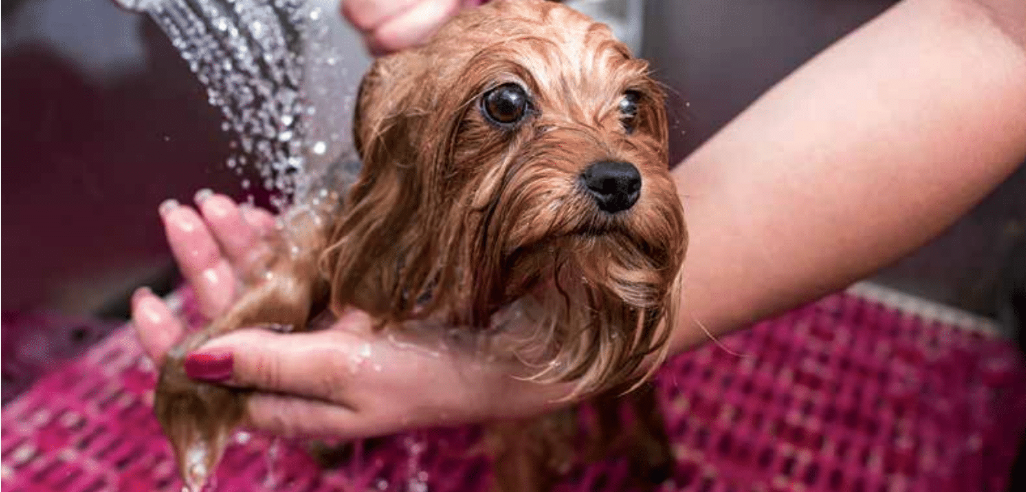The Art of Detangling
Daryl Conner //February 1, 2015//
 Where there is hair, there is the potential for tangles. As professional pet stylists, we are well acquainted with this phenomenon, and how to deal with matted coats is a hot topic when we get together to talk shop.
Where there is hair, there is the potential for tangles. As professional pet stylists, we are well acquainted with this phenomenon, and how to deal with matted coats is a hot topic when we get together to talk shop.
To Shave or Not to Shave
For many groomers, the only answer to dealing with knots is to shave them off. Their battle cry is “humanity before vanity.” They believe that the act of dematting is cruel. Then there are handfuls of professionals at the other end of the spectrum who refuse to shave a pet, ever, no matter what.
Most of us fall somewhere in the middle. Debi Hilley, who is the owner of A Cut Above, in Albany, GA, has been grooming for 20 years. She has also been breeding American cocker spaniels nearly as long.
“Because of this, I consider myself to be somewhat of an expert at dematting!” she said. “Many groomers tend to not demat coats which can easily be brushed out. With today’s products, from specially designed shampoos, conditioners, and coat sprays to amazing brushes and dematting tools, removing tangles can be done safely and kindly in many situations.”
The trick to easier and gentler grooming is knowing when and how to demat.
“My rule of thumb is usually 15 minutes or less of extra work on client dogs,” said Hilley. “I think knowing the difference between felted and tangled is key. Felting to me is when large areas of the skin cannot be seen due to a very tightly tangled coat. Manageable mats are usually small areas of tangles that are not tightly adhered to the skin.”
It is possible to have both felted and matted areas on a pet. In some cases it may be possible to brush out a dog’s matted ears, tail and face, though the body coat is felted and must be shaved.
“Removing reasonable amounts of matting is not painful or damaging to the coat,” said Hilley. Being able to save some of the pet’s personality by detangling whatever areas you can is a sure way to make customers happier with your work. For example, if you have to closely clip a badly matted cocker spaniel’s legs and body, but can brush out those signature flowing ears, the resulting look won’t be such a drastic change for the owner.
Proper Technique
“I never brush a dirty coat,” Hilley said. “That is damaging to the hair. The dirt and oils in the coat help to hold the mat together too. I also think people need to know that the old adage ‘water makes mats tighter’ is not true. Water actually makes the mats easier to remove.”
To begin the job properly, wash the pet using shampoos and conditioners such as the Best Shot line, which is designed to smooth individual hair shafts and make brushing easier. Use your high-velocity dryer to lift matted areas up and away from the skin while drying.
Make use of some of the excellent detangling sprays on the market too. They can be applied to a damp coat but work best once dry. Slicker brushes such as Tuffer Than Tangles are great tools to begin the dematting process. For heavier knots, dematting tools work wonders. And don’t forget the importance of a really good comb.
“I use a wide-tooth poodle comb—I like my Oster,” said Hilley. “I use it from the outside in on the mats while the dog is wet to split the mats.”
Reducing the size of tangles can make the job go more quickly, and doing so reduces tension on the skin making the pet more comfortable. Cut through the tangles from root to tip, creating sections, or even shortening the length of the hair with scissors before brushing where appropriate.
Every groomer is going to face dealing with a matted coat from time to time—perhaps even daily. So it’s important that they know how to groom a dog’s coat efficiently, humanely and aesthetically. Having this expertise is not only good for dogs but good for your business.
